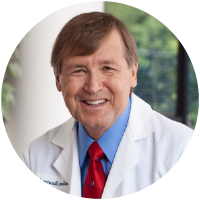
Many people confuse angina and heart attacks, perhaps because we call episodes of angina “angina attacks.” But while these two events are different, they’re closely related.
Angina signals that you most likely have a blockage in your coronary arteries, which means you’re at higher risk of having a heart attack. Angina symptoms can also be caused by a spasm in the coronary arteries, and that is most likely to occur in an area where there is an atherosclerotic plaque. More about that in a minute—first I want to explain what angina is.
What is Angina?
Simply put, angina is a symptom most often experienced as chest pain that is often referred to as a “heart cramp.” It’s caused by ischemia, which means there is a restricted flow of oxygen-rich blood to your heart.
Without enough oxygen, your heart doesn’t have the energy it needs to pump out blood to the rest of your body. And your heart muscles cramp because the heart cells themselves are not getting the oxygen they demand to contract forcefully on every heartbeat.
In most cases, the ischemia is caused by plaque buildup in your arteries. Ischemia can also be the result of the vessels constricting due to cold air exposure or other factors. It can also be caused by a blood clot that completely hinders the flow of blood and can result in a heart attack.
What Are the Signs & Symptoms of Angina?
Symptoms of angina typically include:
- Chest pain, pressure or discomfort
- Shortness of breath
- Fatigue
Less typical symptoms can include:
- Pain, pressure or discomfort in the jaw or teeth
- Pain or pressure in the arm, including the elbow and wrist
- Indigestion
It’s also important to note that as with heart attacks, women can have subtler angina symptoms than men. While men often experience sharp chest pain, women may have a dull aching pain, pressure or heaviness in the chest. These same symptoms can also be indicative of other problems such a gastrointestinal issue, pulmonary or dental issue, inflammation of the chest muscles, and more. Therefore, diagnostic testing is imperative.
What Is the Difference Between Stable & Unstable Angina?
Stable angina occurs predictably in response to an increased energy demand on the heart, such as physical exercise. It’s usually reproducible during an exercise stress test and the suspected coronary artery blockage can be confirmed with an angiogram or cardiac catheterization to assess the circulatory system of the heart.
If an invasive procedure like a stent or coronary bypass is not recommended (or is deferred for some reason), medication is usually prescribed to keep the heart below the “anginal threshold” —the pulse range and blood pressure level at which symptoms appear.
Stable angina is usually relieved with rest. Some people may take nitroglycerin under the tongue to assist the heart to recover more quickly.
Unstable angina, on the other hand, happens unpredictably with symptoms appearing when you’re resting, or when you are emotionally upset. Unstable angina can signal that a heart attack is imminent—so you want to seek medical care as soon as possible.
Angina Versus a Heart Attack: What’s the Difference?
The big difference between an angina attack and a heart attack is that angina is a “warning” that you could have a heart attack. But it’s also temporary, with no permanent muscle damage to the heart. Rest and/or nitroglycerin will usually relieve the ischemia and angina symptoms.
Sadly, even a person with no prior history of angina can have a heart attack—so in many ways, you’re lucky if you do experience angina. But a diagnosis of angina also means that you do have heart disease, so you want to see a cardiologist regularly to evaluate and treat your heart disease.


